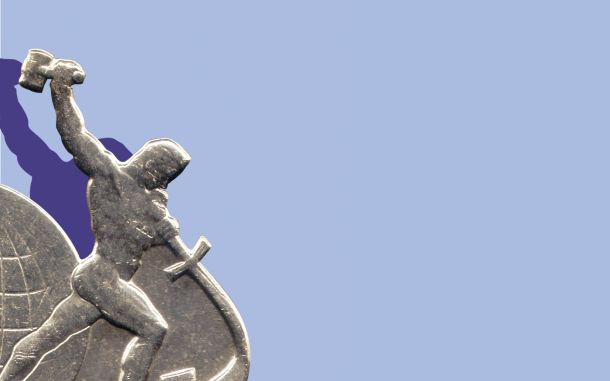The Power of Body Language

In This Article
-
93% of our communication is “nonverbal” in nature, a primary reason why many researchers studied to discover the “power of body language and nonverbal communication.”
-
In medicine, doctor-patient nonverbal communication has received great attention from researchers. Studies found that nonverbal communication in doctor-patient interaction influences satisfaction, trust, medication adherence, health outcomes, and discontinuity of care.
-
As we see from current science, historical sources as well as divine sources, body language is very important and has some forms associated with negative attitude, and other forms with positive attitude.
Communication is the essence of the qualities which make human beings social creatures. The primary purpose of inter-personal communication is information exchange between two parties, but the conveyed message could be influenced by many factors including emotions, body language, the mediums used, as well as cultural and social influences. The science of communication has been studied extensively in many fields including social science, psychology, sociology, business, and healthcare.
Communication involves three components: verbal (the words we choose), paraverbal (the tone, how we say the words), and nonverbal (body language). Researchers, especially in the field of psychology, extensively studied communication and concluded that the interpretation of a message is 7% verbal, 38% tone of voice, and 55% percent body language. That means that 93% of our communication is “nonverbal” in nature, a primary reason why many researchers studied to discover the “power of body language and nonverbal communication” [1].
The most common definition of nonverbal communication is “communication without words.” This silent language includes senses of touch, facial expressions, eye gaze and contact, postures, body positions, signs, and gestures. Body language tells an audience more about a person’s character than the words they say or the tone in which they utter them. In other words, nonverbal communication cues tell the truth and mostly provide objective measures and reactions of the body.
In medicine, doctor-patient nonverbal communication has received great attention from researchers. Studies found that nonverbal communication in doctor-patient interaction influences satisfaction, trust, medication adherence, health outcomes, and discontinuity of care. [2] Effective nonverbal communication is critical for doctors to establish trust with their patients so patients can adhere to, and follow, the suggestions and instructions of doctors. [3] Eye contact is particularly important for positive interpersonal communication, since it activates brain arousal systems and can elicit strong emotional responses. Eye contact has been defined by communications researchers as “the most powerful mode of establishing a communicative link between humans” [4]. The communication of babies relies heavily on body language, in particular mostly on eye gaze. As humans develop from babyhood into childhood and adulthood, eye gaze continues to be an important tool of human interactions as it provides information, regulates interaction, and expresses emotional states. Consistently, eye gaze has been correlated with perceptions of likeability, competence, intelligence, and credibility, as studies have rated those participants who made eye contact more favorably than those who did not [5]. Note that moderation in gaze is also important. Recently, excessive technology and computer usage by doctors in healthcare visits inhibited nonverbal interactions and lead to a reduction in patient adherence to treatment or a reluctance for patients to return to the physician, thus causing negative health outcomes [6].
Some other studies explored the pattern of nonverbal communication of depressed patients who have suicidal tendencies; it was found that some distinct patterns were present [7]. This is helpful for doctors to identify these patients and potentially intervene to prevent a catastrophic outcome.
Furthermore, this phenomenon is not only present in the healthcare industry. Dr. Gottman, a psychologist, observed the interactions of married couples, including their nonverbal communication for around 30 min-45 min, and predicted if they would end up staying married or getting divorced with a success rate as high as 90% [8].
For the last decade, historians and anthropologists have shown a great deal of interest in studying the various forms of nonverbal communication as one possible avenue to the cultural codes and social sensibilities of the past. Most interestingly, we are seeing increased numbers of studies exploring nonverbal communications in holy scriptures including Bible and Qur’an. These holy scriptures utilize and emphasize nonverbal communication tools like intonation, different ways of expression, from traitorous eyes to dead looks, gestures, facial expressions made in anger, derision, and eyebrow movements. There are a number of these instances in holy scriptures, but they are seldom commented on.
Exploring nonverbal instances in the interpretation of Biblical and Qur’anic scripts might provide additional and complementary perspectives to better understand the conveyed meanings of the verses as well as encourage researchers to study implications of such forms of communication. For instance, when Zechariah (peace be upon him) was told that his wife would give birth to a son, he asked for a sign. The sign is described in the Qur’an as “Your sign is that you will not speak to the people for three days except by gesture” (3:41) and in New Testament “not able to speak, until the day that these things shall be performed” (Luke 1:18–22). In another verse in the New Testament that describes wicked and worthless people, it gives details of the nonverbal cues “They are constant liars, signaling their deceit with a wink of the eye, a nudge of the foot, or the wiggle of fingers. Their perverted hearts plot evil, and they constantly stir up trouble” (Proverb 6:12-19).
The Holy Qur’an portrays Moses’ (peace be upon him) encounters and speeches with God at Mount Sinai during his journey with his family and how he was given two miracles by God to use at his mission during his encounter with Egypt’s pharaoh. The Qur’an specifically describes the body language of Moses (peace be upon him) related to his fear during this encounter at Mount Sinai: “Now put your hand through (the opening of) your collar, it will come out (shining) white, unblemished. And cross your arms tightly to calm your fears. These are two proofs from your Lord to Pharaoh and his chiefs. They have truly been a rebellious people (Qasas-32).” This verse might have implications to study how people can control their fear with some body language cues.
The holy Qur’an has many verses which take advantage of using nonverbal communication to describe many characters, feelings, and emotions such as happiness, sorrow, anger, the characters of believers or nonbelievers, humbleness versus arrogance, and specifically describes their associated facial expressions, eye movements, gestures, and hand movements. In the surah al-Muddaththir, a nonbeliever’s reaction is described with details in his body language as follows: “Then he re-contemplated (in frustration), then frowned and scowled, then turned his back (on the truth) and acted arrogantly, saying, “This (Qur’an) is nothing but magic from the ancients” (Al-Muddaththir 21-24).
In another verse, when the Qur’an describes a regretful farmer’s action on the loss of his wealth, it portrays the exact picture including details of his hand movements: “And so all his produce was (totally) ruined, so he started to wring his hands for all he had spent on it, while it had collapsed on its trellises. He cried, ‘Alas! I wish I had never associated anyone with my Lord (in worship)!’” (Al-Kahf 42).
The Qur’an also advises Moses (peace be upon him) for the tone of communication that he should utilize when he encounters the Pharoah: “Speak to him gently, so perhaps he may be mindful (of Me)” (Ta ha 44). Some of these verses show the importance of nonverbal communication and might encourage researchers to study these behaviors and their implications in detail.
The “Messengers” who influenced millions of people were also great communicators and educators that utilized “the power of body language” in their teachings. Jesus (peace be upon him) was described as a humble and caring person, and his behavior and body language only reflected these innate qualities. We see various passages of the Bible that go along the lines of, “Jesus was warm and compassionate, and his facial expressions no doubt reflected this” (Matthew 11:28, 29). “People of all sorts sought him out for comfort and help” (Luke 5: 12, 13; 7: 37, 38). “Even children felt at ease in his presence” (Matthew 19:13-15; Mark 9:35-37).
Prophet Muhammad (pbuh) was also another messenger of God, and his noble manners were described as "And you (stand) on an exalted standard of character" in the holy Qur’an (68:4). One aspect of his character is using his body language very effectively to teach others, so he was a perfect example of how to communicate with people [9]. Some of the examples we see in additional narrations about his non-verbal language are as follows:
When he pointed to something or somewhere, he used to point with his whole palm. When he was surprised, he used to turn his palm inside out (upwardly). He used to join his palms while speaking and hit his right palm to his left thumb. When he got angry, he would turn his face to the other side. When he was happy, he would lower his eyes. His laugh was mostly a smile. When he spoke to someone, he would look at his face, if he held his hand, he would not leave it unless he let go, and he would not turn his face to the other side.
In one hadith, the Messenger of God said, “One who cares for an orphan and I will be this close in Paradise,” and he pointed to his index and middle fingers.
Most of Muslim scholars in the science of hadith study and evaluate the Islamic hadith—i.e. the record of the words, actions, and the silent approval of the Prophet (pbuh)—deal with the text, we also see some narrators who report the body language he used when he says that specific statement [10].
In this technology dependent century, we use many different technologies as primary communication tools in daily life from text messaging, group chatting, to emails. This growing industry also realizes the integration of body language expressions in written messages that are vastly different from traditional nonverbal communication features. Emojis are one such people feature that allow people to express their feelings in greater detail.
As we see from current science, historical sources as well as divine sources, body language is very important and has some forms associated with negative attitude, and other forms with positive attitude. Taking proper training, and learning how to use our body language effectively, we can improve our interactions, trust, and relationships with others. It is also mindful to learn the influence of cultural differences on body language to better understand and communicate with people from multinational countries. Daily technology use is also another growing factor that influences our forms of communication overall. However, using technology in unhealthy quantities can also potentially harm our in-person communication, especially body language since it takes away attention and creates ignorance. There is ongoing research on how technology influences in-person communication, and effort is being put into mitigating strategies to minimize potential negative influences. Finally, the trend of body language manipulation to gain trust for negative purposes is also increasing. We should also be mindful and cautious against this trend and always have checks and balances against people with such wrong intentions.
References
- Mehrabian, Albert. 1972. Nonverbal Communication, Chicago, Aldine-Atherton.
- D'Agostino, T. A., & Bylund, C. L. (2014). Nonverbal accommodation in health care communication. Health Communication, 29(6), 563-573. Montague, E., & Asan, O. (2014).
- Montague E and Asan O. (2014). Dynamic modeling of patient and physician eye gaze to understand the effects of electronic health records on doctor-patient communication and attention. International journal of medical informatics, 83(3), 225-234.
- Farroni, T., Csibra, G., Simion, F., & Johnson, M. H. (2002). Eyecontact detection in humans from birth. Proceedings of the National Academy of Sciences of the United States of America,99, 9602–9602.
- Montague, E, Xu,J., Chen,P., Asan,O., Barrett, B and Chewning, B. "Modeling eye gaze patterns in clinicians“ patient interaction with lag sequential analysis." Human factors 53, no. 5 (2011): 502-516.
- Asan, O., & Carayon, P. (2017). Human factors of health information technology: ”challenges and opportunities”.
- Asan, O., Kim, S. C., Iglar, P., & Yan, A. (2018). Differences in verbal and nonverbal communication between depressed and non-depressed elderly patients. Journal of Communication in Healthcare, 11(4), 297-306.
- Gottman, John M., James D. Murray, Catherine C. Swanson, Rebecca Tyson, and Kristin R. Swanson. The mathematics of marriage: Dynamic nonlinear models. MIT Press, 2005.
- https://fountainmagazine.com/2003/issue-42-april-june-2003/prophets-as-teachers
- Bunyamin Erul. Muhammad (Pbuh) and the Body Language. Journal of Islamic Research. 1(2). 2008








